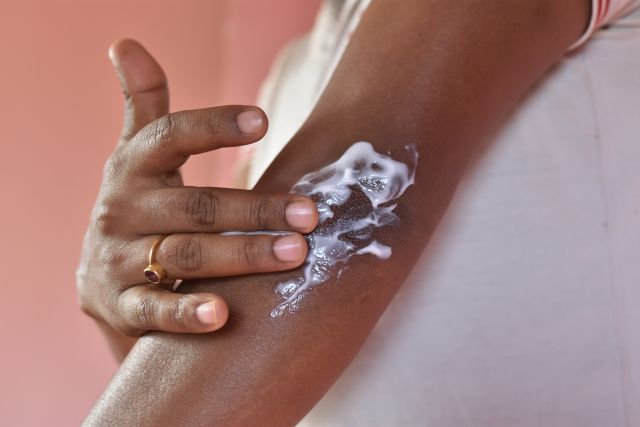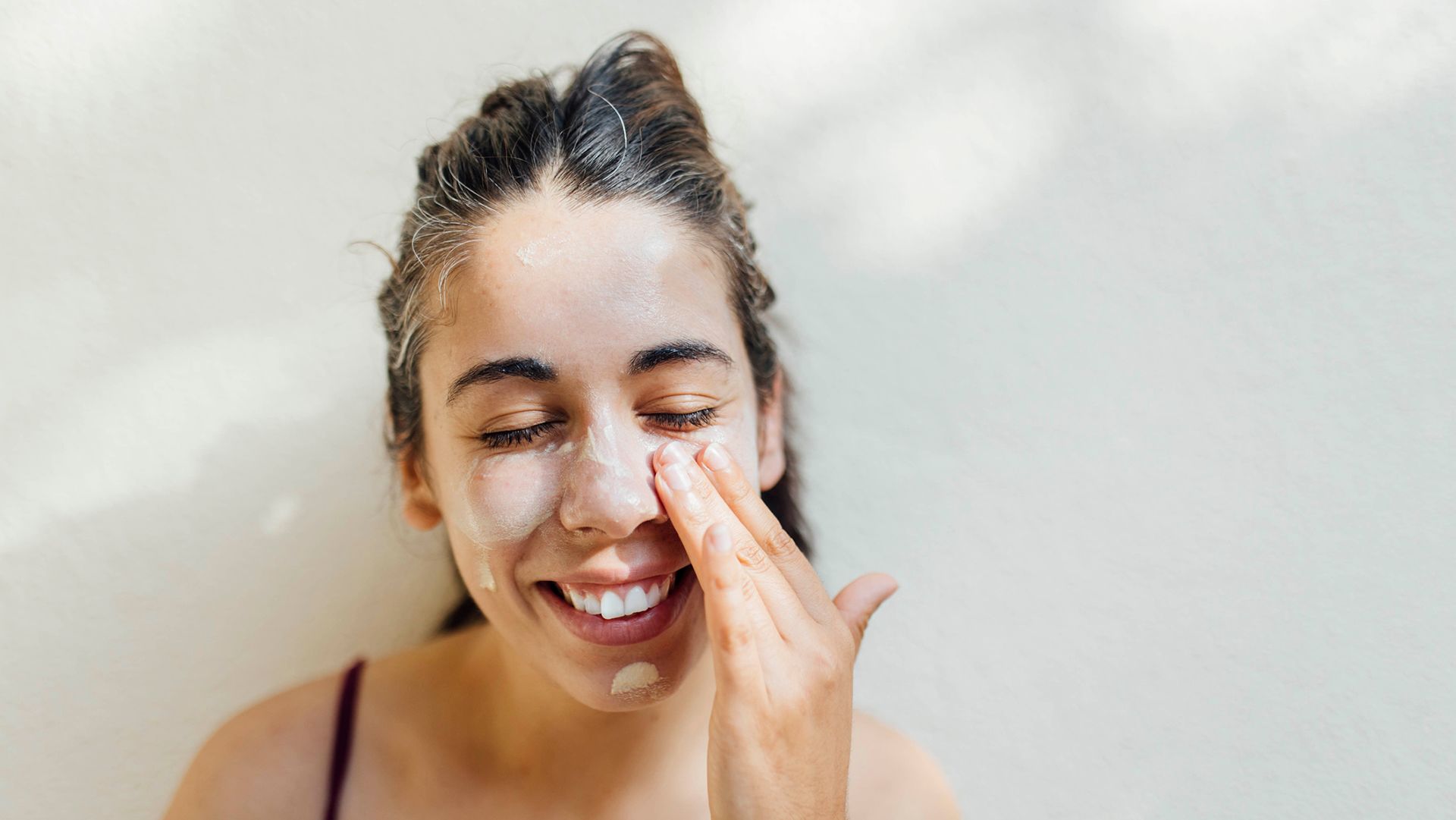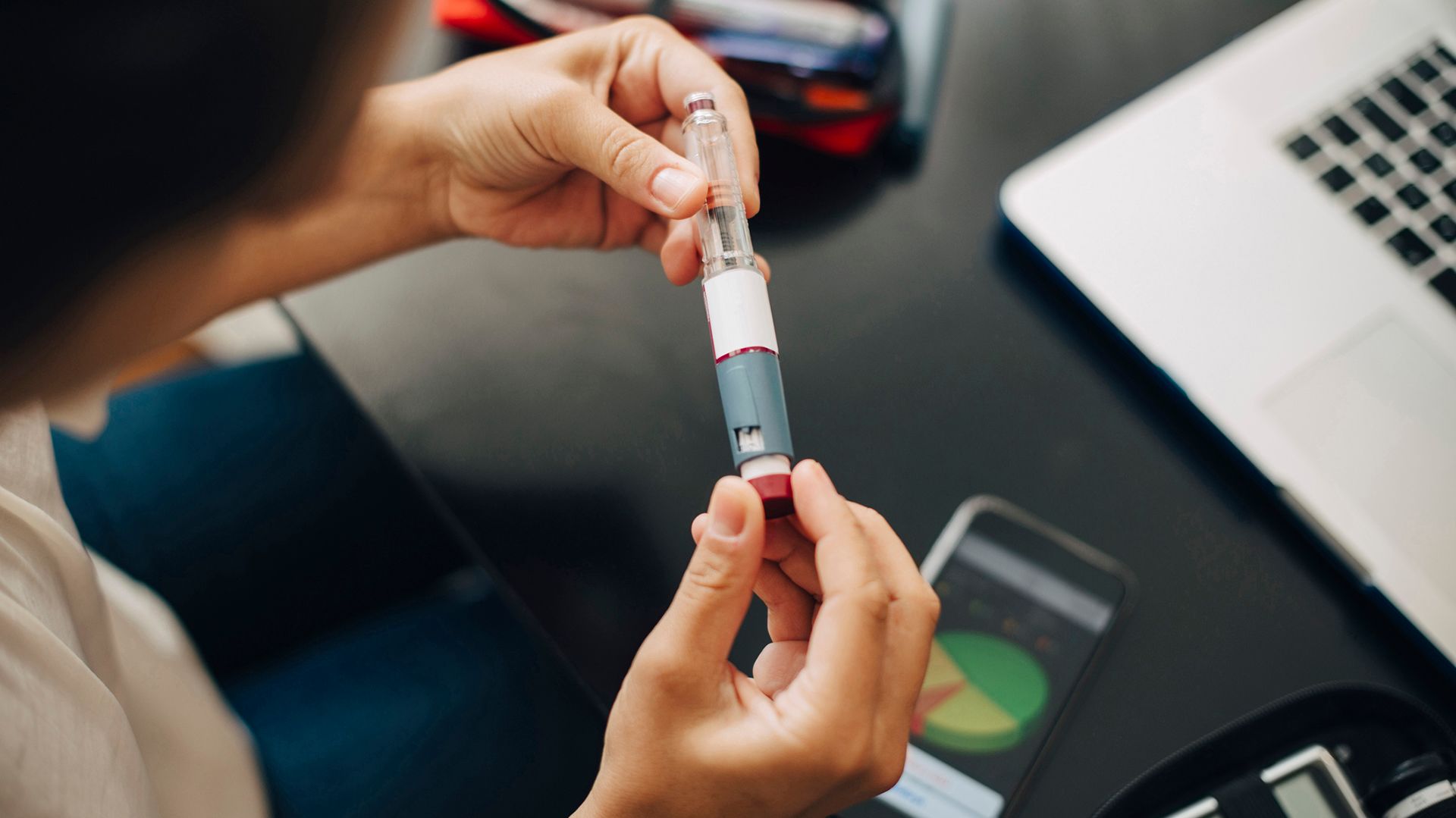You may have heard the terms “skin barrier” and “barrier function” in relation to skin care. Barrier function refers to the outermost layer of skin and its ability to protect your body, keeping out harmful substances like germs, irritants and chemicals, and also helping the skin retain moisture.
Atopic dermatitis is a condition that causes the skin to become dry, irritated and itchy, and is the most common form of eczema (so common, that the term atopic dermatitis is sometimes used interchangeably with eczema). Approximately 28 million adults and children in the United States, and many more worldwide, have atopic dermatitis.
Though the exact cause of atopic dermatitis is unknown, research has shown that this outermost layer of skin does not function normally in people who have the condition.
Understanding your skin barrier
The outermost layer of skin (called the stratum corneum) is made up of non-living skin cells and lipids. Lipids are fats that are one of the major components of living cells in plants and animals. One analogy compares the skin barrier to a brick wall, where the non-living skin cells are the bricks and the lipids are the mortar that holds the bricks in place.
The outermost layer of skin is also protected by something called the acid mantle, a very thin layer of naturally occurring chemicals that have an acid pH. This acidic layer prevents bacteria and other potentially infectious microbes from growing on the skin.
Skin barrier and atopic dermatitis
When a person has atopic dermatitis, the skin barrier does not function properly. A breakdown of the lipid structures in the skin results in the skin losing moisture at a faster rate than normal. This causes the dry and sometimes scaly-looking skin that is one of the most common symptoms of atopic dermatitis. This breakdown of the skin barrier also means that the skin has weakened defenses against irritants in the environment that can cause atopic dermatitis symptoms to flare.
Additionally, at least one study found that people with atopic dermatitis do not have a normal acid pH on their skin—in other words, the acid mantle is not acidic enough. This study proposed the idea that taking steps to restore the acid pH on the surface of the skin could improve skin barrier function, though more research is needed into this topic.
Improving skin barrier function
Moisturizers are a key component of managing and treating atopic dermatitis. As their name implies, moisturizers help the skin retain moisture and stay hydrated. Moisturizers may also help repair the lipid structures of the skin and help the skin maintain an acid pH. Moisturizers should be applied to your entire body immediately after bathing, and should be applied to the hands after washing.
Deciding on which moisturizer to use is a matter of personal preference and what your skin responds to. The preferred type of moisturizers for atopic dermatitis are creams or ointments that have a high oil content. These types of moisturizers are sometimes called emollients. Lotions contain more water than oil, and tend to evaporate too quickly, making them less effective. Some patients also use natural oils like sunflower seed oil and coconut oil, which work as moisturizers and also have antimicrobial properties (olive oil may not be the best option, as one study has shown that it may damage the skin barrier). Essential oils—such as tea tree oil, lavender oil, chamomile oil and many others—should be avoided, as some may aggravate symptoms or damage the skin barrier. Products that contain fragrances, preservatives or other chemicals should be avoided, as these can irritate the skin.





